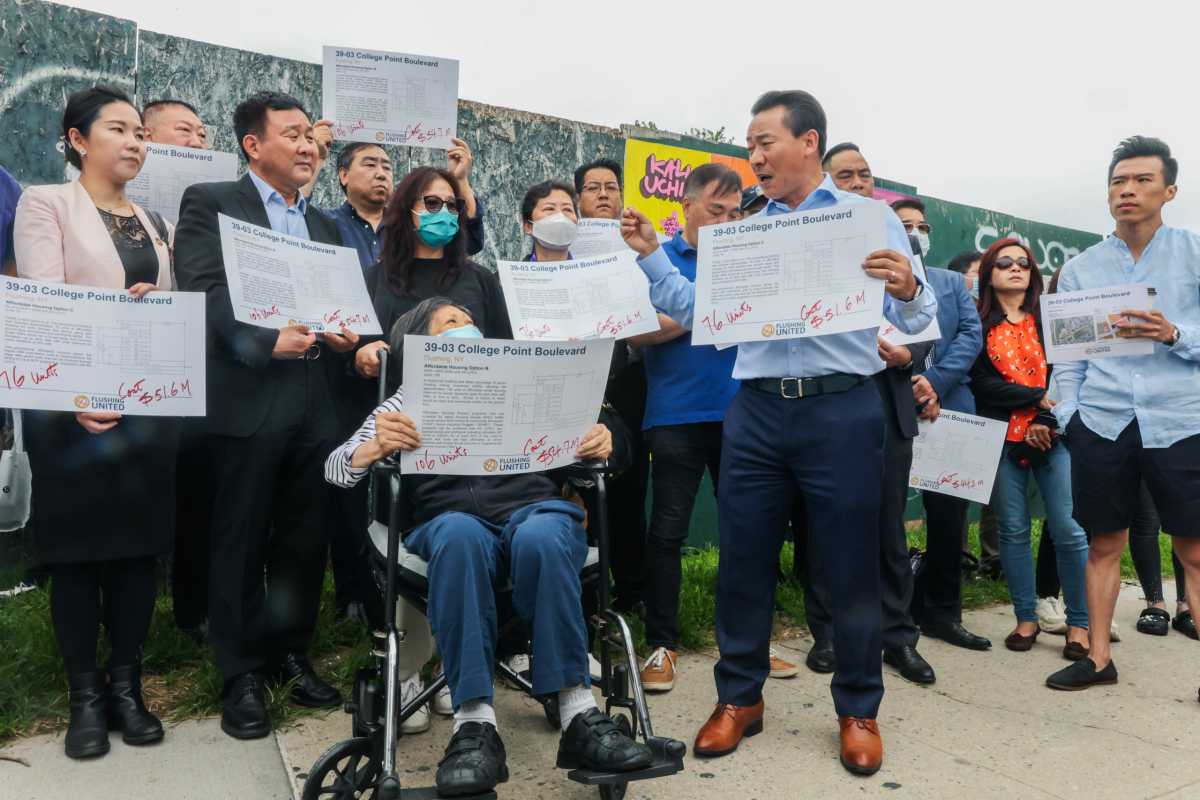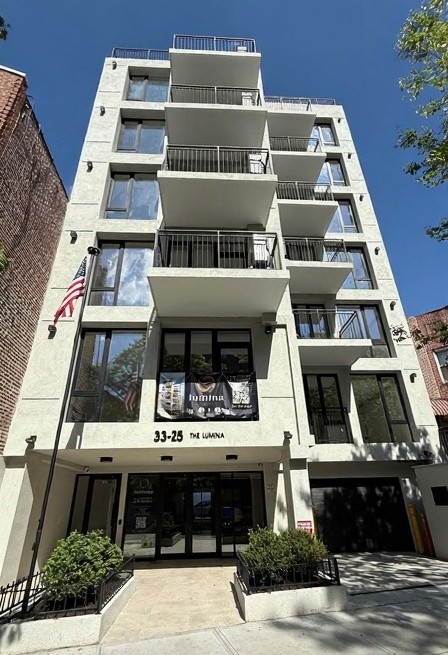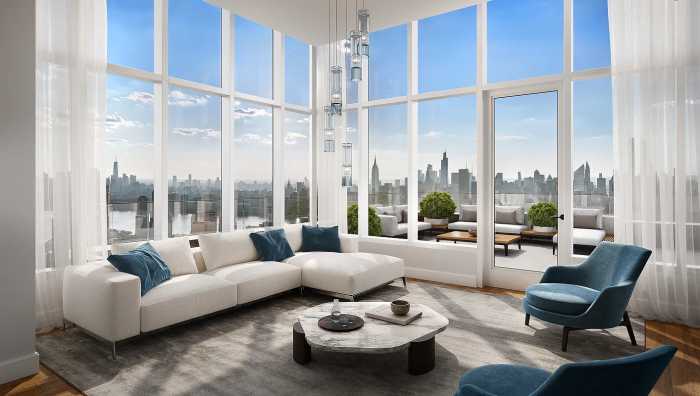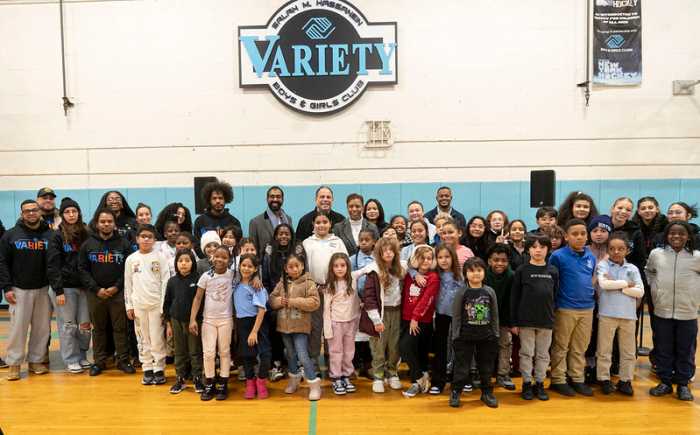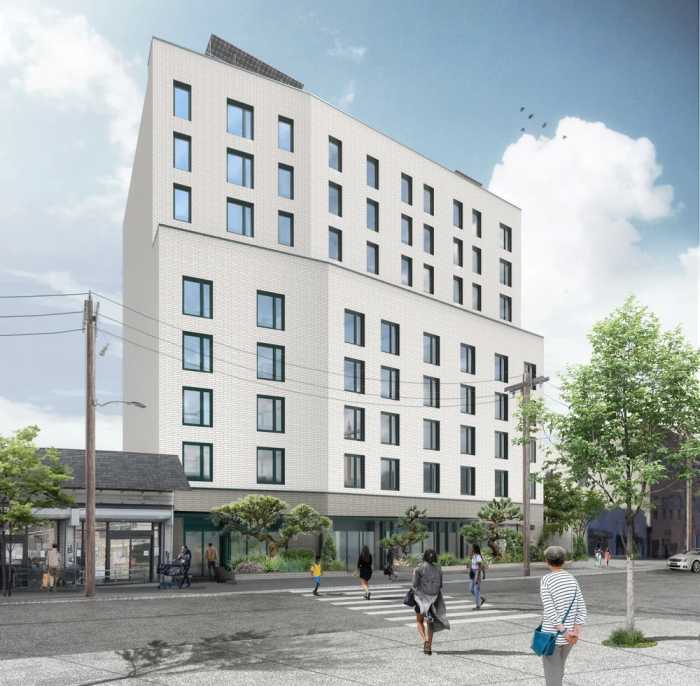Flushing United, a diverse coalition of local community and business leaders, joined dozens of residents and neighborhood advocates on Thursday, June 16, announcing three viable solutions to bring much-needed, permanently affordable housing to their neighborhood.
The coalition is calling on Asian Americans for Equality (AAFE), to pursue one of these paths specifically as it pertains to the development of a transitional housing facility at 39-03 College Point Blvd. to help families with children in need.
According to Flushing United, permanently affordable rental housing would meet the needs of Flushing’s families and senior residents and is also aligned with the development goals of the community and Community Board 7.
Earlier this month, the coalition rallied against AAFE’s proposal to build a transitional housing facility, while claiming there has been a lack of public engagement and transparency regarding the project.
“Building truly affordable housing may not be the easy solution, but it is the necessary one. We urge AAFE to seriously examine and consider these three viable options for the development of 39-03 College Point Blvd.,” said Jerry Lo, acting president of Flushing United. “The future of Flushing is at stake. We must act now to ensure middle-class families and seniors can afford to live here for generations to come.”
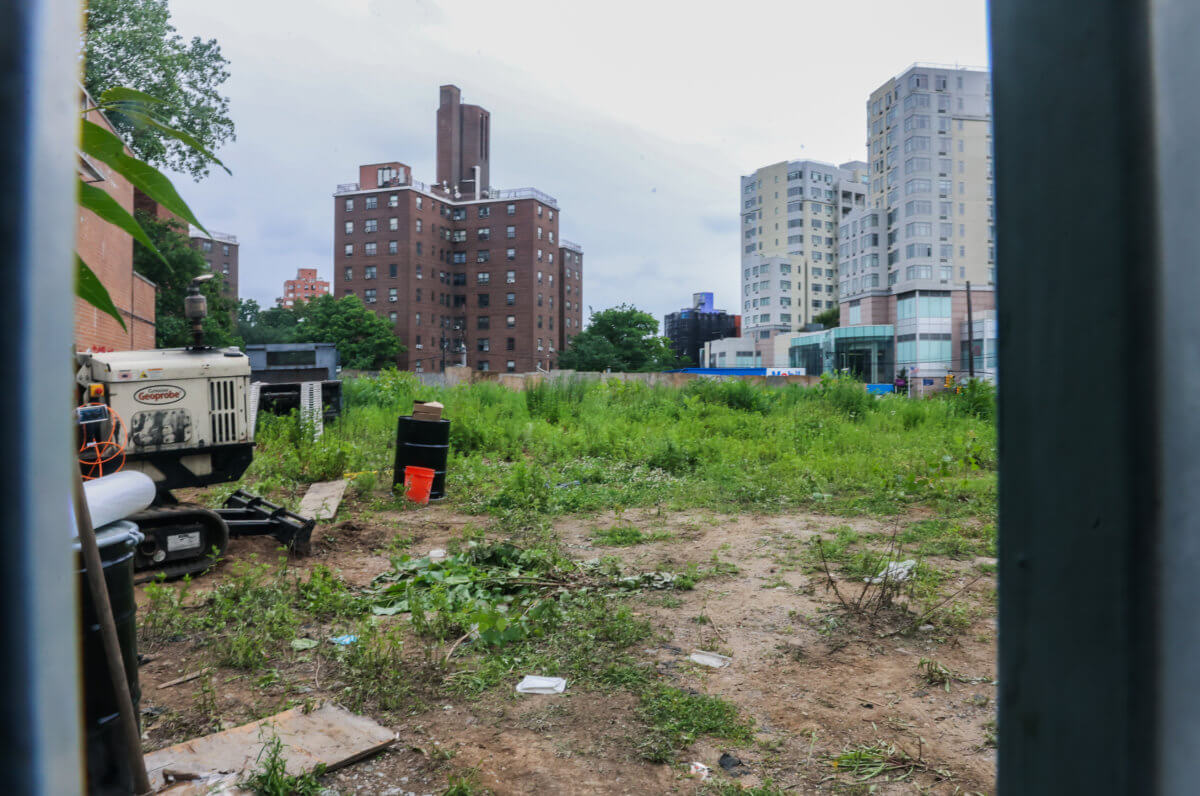
Flushing United hired a reputable independent consulting expert who specializes in all stages of development for New York City’s affordable housing to review the site, conduct a feasibility study and develop the three proposals and pricing.
The first proposal offers 58 units ranging in levels of affordability from permanent housing for the formerly homeless to those earning 80% of the area median income (AMI). The total cost is $44.3 million.
The second proposal seeks to bridge the housing needs of the elderly in Flushing, providing 106 units of affordable rentals for seniors 62 years and older. According to Flushing United, these income thresholds would be 30% to 40% of the AMI, and leverage ground-floor space for mixed-use community or commercial activity. The total cost is $54.7 million.
The third proposal explores an intergenerational solution, offering housing to both working families and the elderly. Under this model, 76 units would be intergenerationally mixed, targeting a broad range of AMI from homeless to 80%, and seniors up to 40% of the AMI. The total cost is $51.6 million.
According to Flushing United, the proposed alternatives offer long-term affordability and take advantage of myriad grants and financing mechanisms aimed at lifting working-class families.
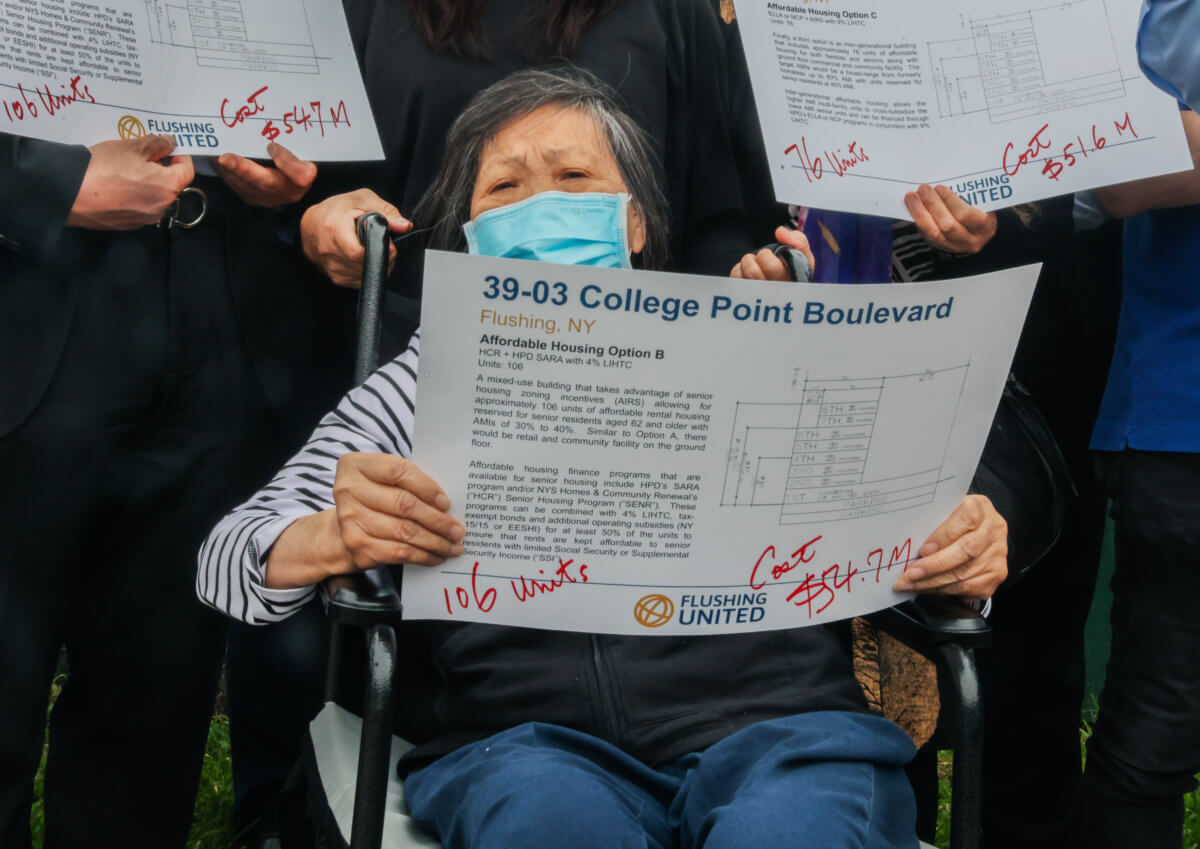
Flushing United says its three proposals present an alternative comfortably within the confines of “as-of-right” development fitting the neighborhood’s historic context and surrounding buildings.
Additionally, Flushing United said their proposals provide affordable housing to those in “precarious or tenuous housing situations” and all of the proposals will cost taxpayers significantly less than the $440 million that it would cost for the transitional housing development proposed by AAFE.
In a joint statement, Peter Tu, of the Flushing Chinese Business Association, and Thomas Grech, president of the Queens Chamber of Commerce, said small businesses in Queens support affordable housing because it’s “good for the community’s growth and development.”
“These three new options are not only thoughtful, but they are more cost-effective and will potentially bring more business to Flushing,” Tu and Grech said.
Congresswoman Grace Meng said Flushing needs more affordable housing and “every avenue should be explored, especially plans that could help the seniors and families in the neighborhood.”
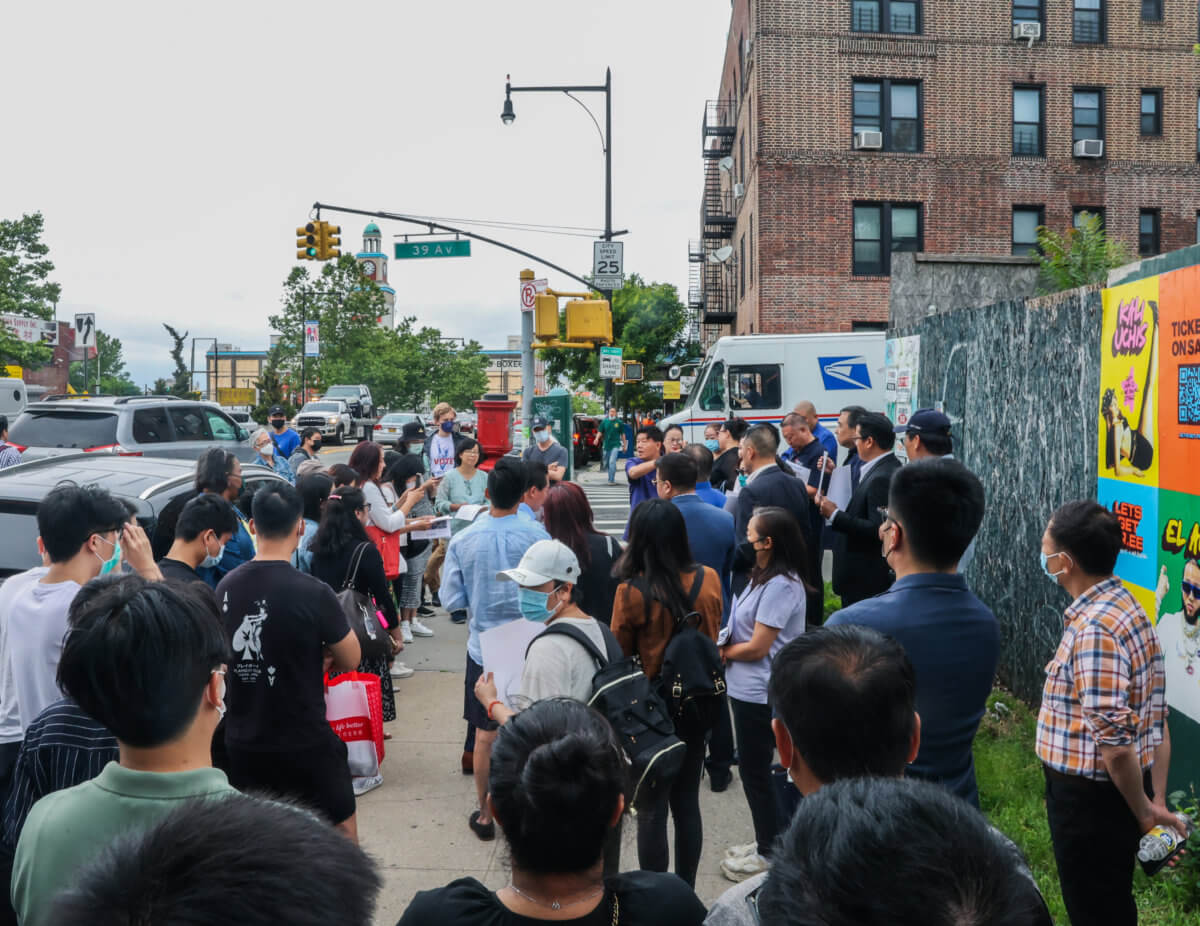
From the day she took office and began to learn details of the project, Councilwoman Sandra Ung said she would be supportive of an affordable housing alternative.
“Our community is in desperate need of more housing, and we should explore any opportunity to create truly affordable housing units for Flushing residents, whether on College Point Boulevard or any other site in the area,” Ung said.
In a statement to QNS, AAFE referred to Flushing United’s proposals as “schemes riddled with unrealistic assumptions and cost estimates.”
“This is not a plan to build affordable housing on the 39th Avenue site, but rather another attempt by developers who have never before advocated for affordable housing to mislead the Flushing community,” AAFE said. “The budget projections for maintenance and operations are low, failing to take into account high utilities, insurance and other expenses. The hard costs for construction are also unrealistic and labor costs, assuming a commitment to living wages, are low.”
AAFE added, “The schemes assume high commercial rents which are not the reality in the local market. Option 3 relies on a program that no longer exists — under new rules — the Department of Housing Preservation and Development does not allow developers to mix zoning for senior housing and non-senior housing.”
Additionally, AAFE said the plans assume approval of funding sources — City Council funding and Low-Income Housing Tax Credits — which are difficult to acquire and cannot be counted on.
“They are competitive funding streams that can take years to secure. The bottom line is that these schemes would leave a multimillion-dollar funding gap and are not viable. Since the ‘experts’ used to create these scenarios were not disclosed, we have no way of evaluating their credentials. They do not appear to have experience building affordable housing,’” AAFE said.

